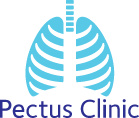Pectus Posture
Both pectus excavatum and carinatum are associated with other skeletal problems and what can be regarded as a 'pectus syndrome', a cluster of symptoms and signs that occur together and characterize a condition, or simply referred as ‘Pectus Posture”. Such a syndrome is often described by patients or their family as 'poor posture'. It is common and, in our experience, affects 1 in 3 patients with pectus deformities. It often overlooked by non-specialist pectus health care professionals. It’s unclear why patients with patients with pectus deformities particularly pectus carinatum develop such posture, but it is likely to multifactorial including the effect on thoracic mobility (shortening and tightness of pectoral muscles); weakness of the shoulder and upper back muscles; and poor ‘core’ strength affecting standing position.
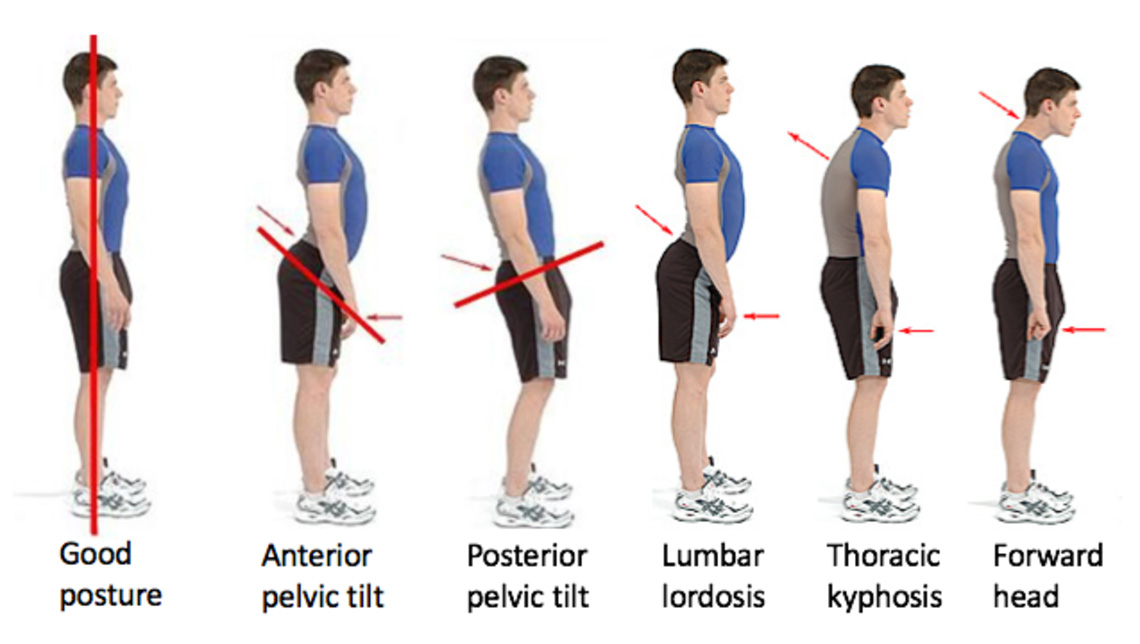
Please click on the buttons below to see and read about patients verified experiences (in their own words) and testimonials (which generally include before and after treatment photos). The pectus clinic is very grateful to all the patients who provided feedback.
Thoracic & Cervical Spine
Along with recognized spinal conditions such as Scheuermann’s syndrome (or juvenile kyphosis) excessive outward curvature of the spine, kyphosis of upper thoracic spine is often seen in pectus patients, along with rounded shoulders. The main symptom of kyphosis is an abnormal forward curve in the upper part of the spine. It causes the upper back to appear hunched over, with the shoulders rounded forward (rounded shoulders) and head protruding (forward head). In mild cases, the spinal curve is not always noticeable. In other instances, a person may look as if they are bending forwards. Kyphosis often occurs without symptoms but can cause back pain, stiffness in the upper back, a rounded back and tight hamstrings. Poor posture including what is typically seen in pectus deformities is the main cause. Treatment depends on severity but in young patient with pectus deformities typically involves physical therapy to improve thoracic mobility and strengthen upper back and abdominal muscles.
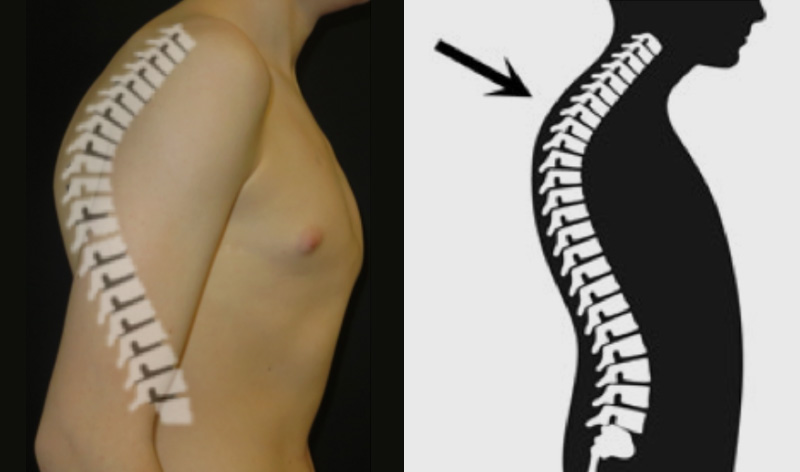
Thoracic Kyphosis in a patient with pectus carinatum
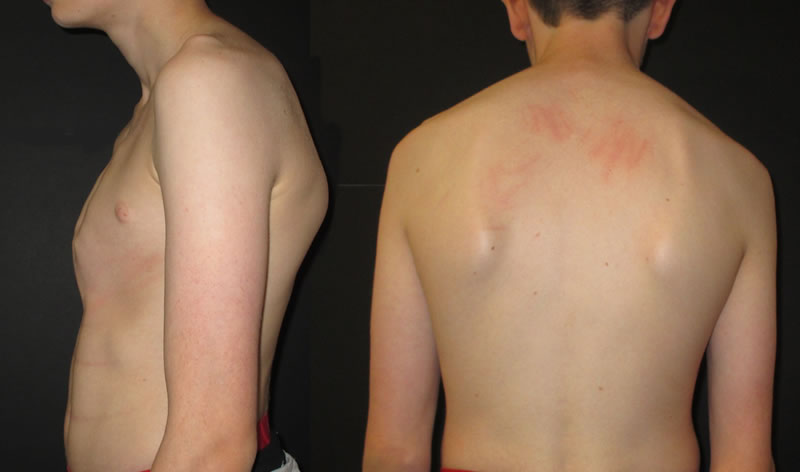
Young man with pectus carinatum: note rounded shoulders, head forward with ‘text neck’ and thoracic kyphosis with lateral rotation (rolled forward) of shoulders blades (scapula)
Lordosis refers to your natural lordotic curve, which is normal. But if the curve arches too far inward, it's called lordosis and can affect most commonly the lower back and occasionally the neck. Lower back lordosis may cause no symptoms but can be associated with muscle pains. It is associated with anterior pelvic tilt and ‘pot belly’ (an apparent abdominal Mild forms particularly in young patients can be treated with guided physical therapy to strengthening lower back and abdominal muscles.
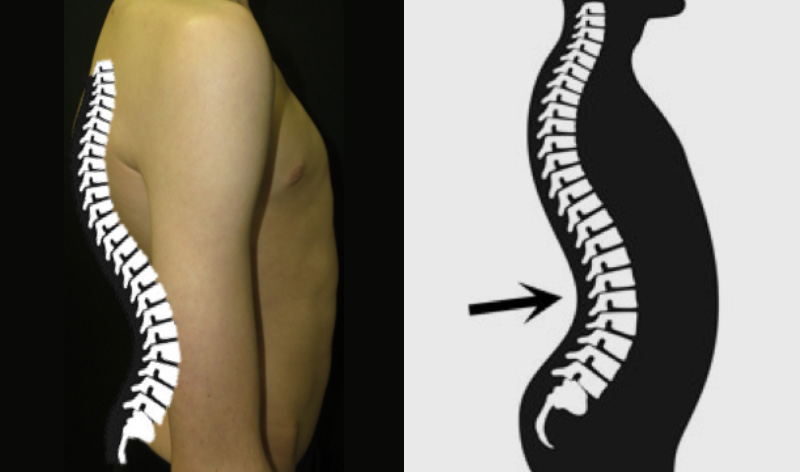
Lumbar Lordosis in a patient with pectus carinatum
Scoliosis or abnormal, sideways curvature of the spine is also seen in patients with abnormal chest walls (see associated conditions)
Such spinal issues seem to be most noticeable in asymmetric pectus deformities, either carinatum or excavatum and may be caused at least in part, particularly if mild to uneven pressures applied to the rib cage and tilting of the sternum.
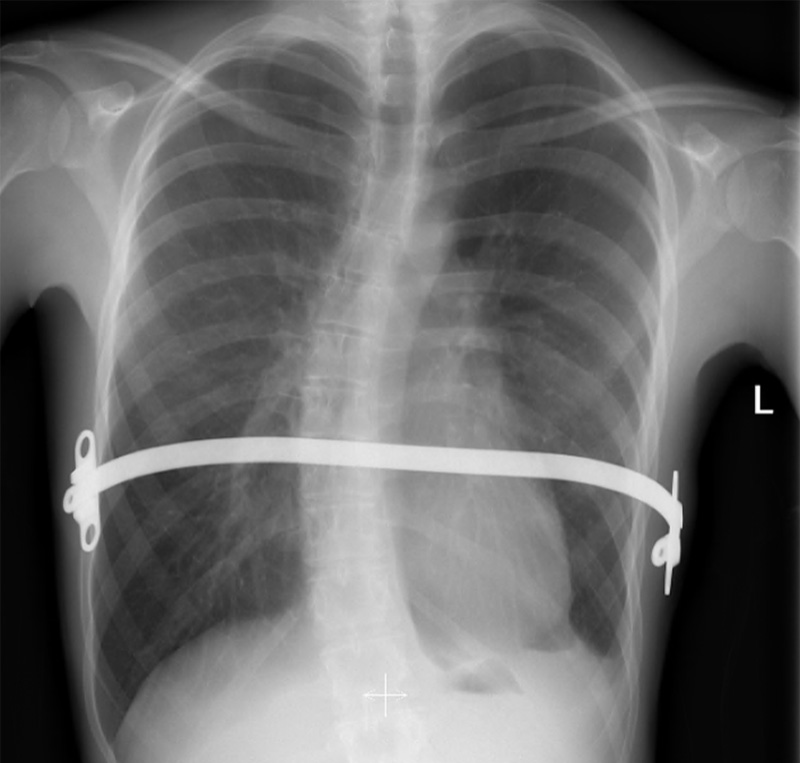
Chest x-ray in patient with an asymmetric severe pectus excavatum corrected with a Nuss procedure showing the associated scoliosis
Head and Neck
The head appears to be pushed forward and the neck excessively flexed. Forward head posture and now increasingly known as ‘text neck’ is a poor habitual neck posture issue. Symptoms including headaches and neck discomfort with muscle tension in the neck and shoulders, discomfort in the mid back and even pins & needles and numbness in the arms and hands are caused by increased compressive forces through the neck joints and increased muscle tension. Why this posture issue is common in patients with pectus deformities particularly pectus carinatum is not clear though may be related to presence of the posture problems including thoracic kyphosis and rounded shoulders. One possible explanation relates altered centre of gravity caused by the pectus condition, particularly in protruding pectus carinatum patients. Treatment with an external compressive brace may help along with guided physical therapy to improve forward neck posture.
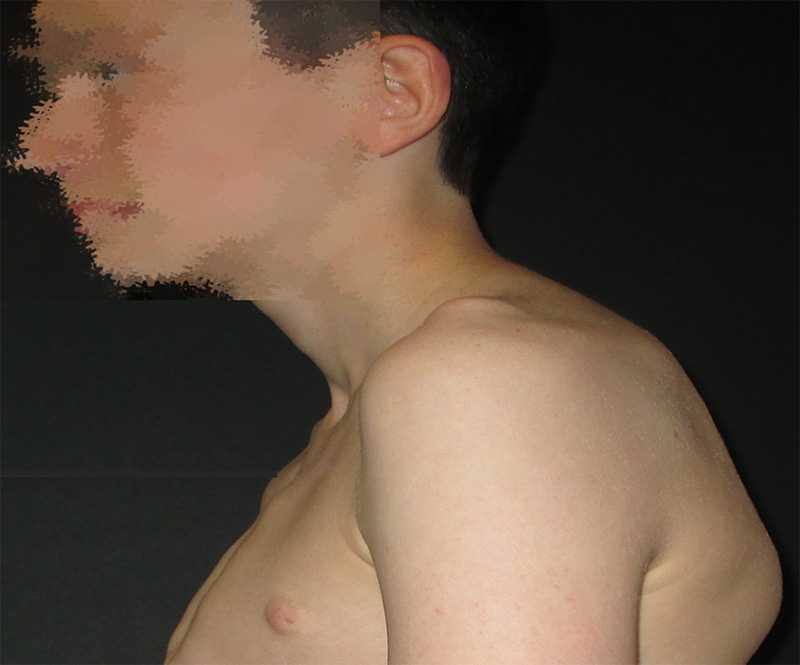
Young patient with Forward head posture, with the head pushed forwards and the neck excessively flexed
Shoulders
The shoulders can be affected in several ways in patients with pectus deformities including uneven shoulder (shoulders appear to be at same level), rounded shoulders where the shoulders appear to drop forwards and winging of the shoulder blades (scapula) where the shoulder blades appear to protrude or look prominent.
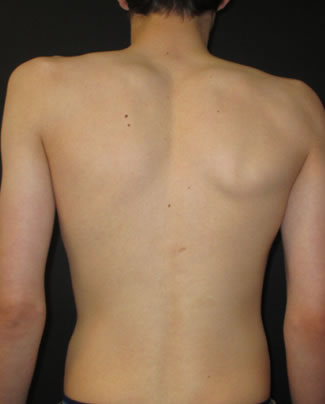
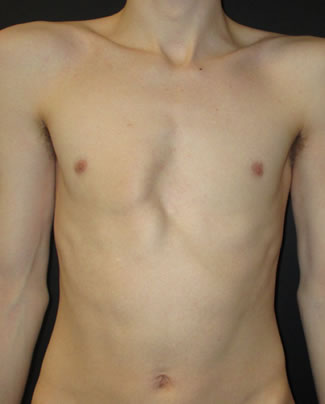
Uneven shoulders noted in a young man with asymmetric pectus excavatum
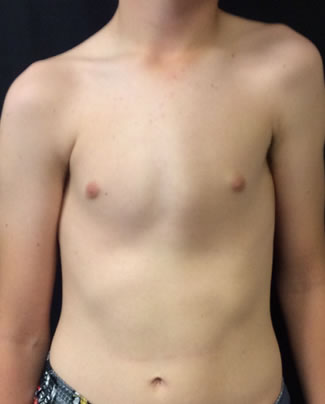
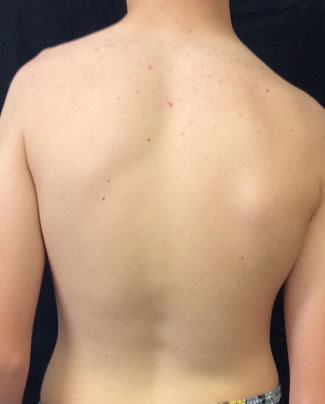
Shoulder tilt with lateral rotation of the scapula in a patient with severe pectus carinatum
The shoulders can appear to be uneven particularly in the more asymmetric pectus cases and may be caused a similar problem seen with the spine (scoliosis) with excessive and uneven pressures applied to the rib cage and tilting of the sternum. Protruding shoulder blades is sometimes also noted and is caused by lateral rotation of the shoulder, and in the most extreme examples are called by doctors as scapular (shoulder) winging. As with other chest wall problems pectus deformities can be associated with Often referred to a scapulothoracic dysfunction or dyskinesis, it refers to abnormal motion of the scapula during shoulder movement. The causes are multiple and include problems with any other one of more the components of the scapulothoracic joint including weakness, imbalance, tightness or detachment of one or more of the scapulothoracic muscles that control the scapula particularly the larger scapular muscles such as the serratus anterior, latissimus dorsi, rhomboids, and trapezius muscles.
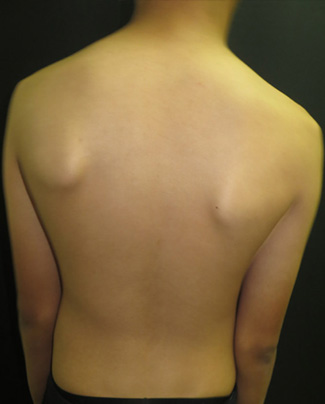
Postural asymmetry of scapula with winging of the scapula is typically seen in a young man with a pectus deformity
Abdomen and Pelvis
The abdomen or belly can sometimes appear to be excessively protruding as if the patient has a 'pot belly’ despite not being overweight. It may be exaggerated by the lower ribcage appearing to stick out (see rib flaring) as well as the pelvis rotating forward, which forces the spine to curve. This is called Anterior pelvic tilt appears to be associated with poor muscle tone and pelvic tone and often responses to specific core muscle exercises as well as exercises to stretch the hip flexors and lower back muscles. Less commonly in patients with pectus deformities the tummy appearance can be caused by the opposite problem, Posterior pelvic tilt, where the hips are excessively tilted forward or backward.
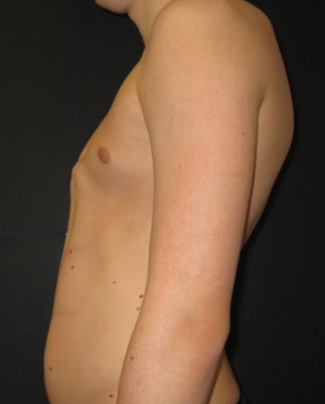
Young boy with a symmetric pectus carinatum deformity and anterior pelvic tilt causing the protruding ‘pot belly’ abdomen. This improved with guided physical therapy
Please click on the buttons below to see and read about patients verified experiences (in their own words) and testimonials (which generally include before and after treatment photos). The pectus clinic is very grateful to all the patients who provided feedback.
